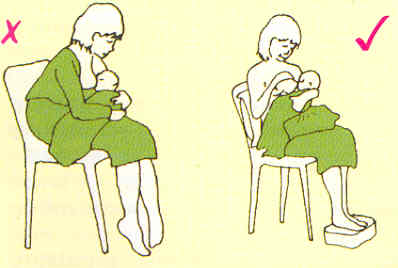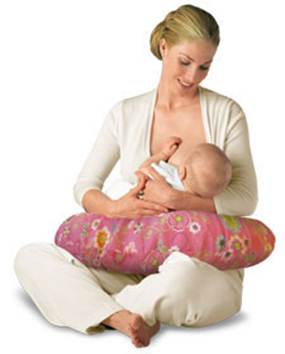Breastfeeding changes when the child grows. These
are some ways to adapt.
The first days and weeks of breastfeeding
is a survival: make your child stick to breast (and hold it), and ready to
continue if you encounter problems. However, at a point, when you and your
child are familiar with each other, you may have other questions and worries.
This is a view of some problems for breastfeeding that you may face in the
first year.
January
I heard that having suitable posture is
essential for successful breastfeeding. Is it really important?

Suitable
posture is essential for successful breastfeeding.
Yes, it is very important. If you do not
have suitable posture, your baby may not get enough milk, and your nipples may be
sore. Here are some tips from Corky Harvey, R.N, M.S, I.B.C.L.C, co-owner of
The Pump Station store chain in Southern California, about the appropriate way
to feed the baby:
Put your child lying on one side, and put
his/her abdomen next to yours.
Put your baby on a pillow, keep him/her on
your breast; do not bow toward your baby.
Use your free hand, place your thumb and
fingers around the nipple areola (the dark area around the nipple).
Put his/her head to the back a little and
gently touch the baby with the nipple right on the baby’s upper lip.
When the baby’s mouth opens wide, put the
breast in his/her mouth. Put the baby’s lower jaw in the front, right after the
nipple
Put his/her head forward, put your baby’s
upper jaw into the breast. Make sure the baby sucking the whole nipple and at
least 1 ½ of areola in mouth.
February
How can I know if my child has enough
milk or not?

My
child has enough milk or not?
This is one of the most common questions of
mothers who breastfeed their babies. Unlike drinking milk with a bottle, you will
know how much milk your baby drunk. To ensure both are in the right direction,
your doctor will carefully monitor your baby’s weight, especially in the first
few weeks. Meanwhile, you should pay attention to your baby’s diaper: your baby
should have 6 to 8 wet diapers and at least 2 times defecation with mustard
color daily when the baby is at 7-day-old.
Also remember that: “as long as your baby
is gaining weight steadily and diapers shows he/she is eating enough, you can believe
that your baby is getting enough milk”, Jeanette Panchula, R.N, P.H.N,
I.B.C.L.C, a nutrition consultant of The health care community in Solano county
and California Health care Division for Mother, Children and Youth. If you are
still worried, let check the weight with your pediatrician.
March
I will be back to work full-time in a
few weeks and I want to continue to breastfeed my baby. How can I handle the milk
pump?
First, talk to your boss about your plan so
that you can find the best place to breastfeed your child. “Everything will become
easier if you can find the place and time to pump your milk before come back to
work”, said Panchula.
You should start to pump milk when your
child is 3 or 4-week old so that the baby can get used to the bottle and you
will have reserved milk in the refrigerator. If you have not started yet, let
do it now! Because you’ll be back to work full time, you will definitely want
to rent or buy a double electric milk pump because it helps pump the milk and
reduce pump time. When you return to work, try to pump frequently - because your
child usually requires nursing.
April
Sometimes I want to drink some wine. How
long should I wait after drinking for breastfeeding?
In general, alcohol from drinks - 8 ounces
of beer, 6 ounces of wine or a glass of brandy - usually is metabolized within
2 to 3 hours (so that it is not presented in your milk), it is safe time for
breastfeeding. However, as long as you feel any effects from alcohol, whether
you're just groggy or you are drunk, not breastfeed your baby. For more secure?
Let’s try MilkScreen, alcohol tester in breast milk at home (milkscreen.com)